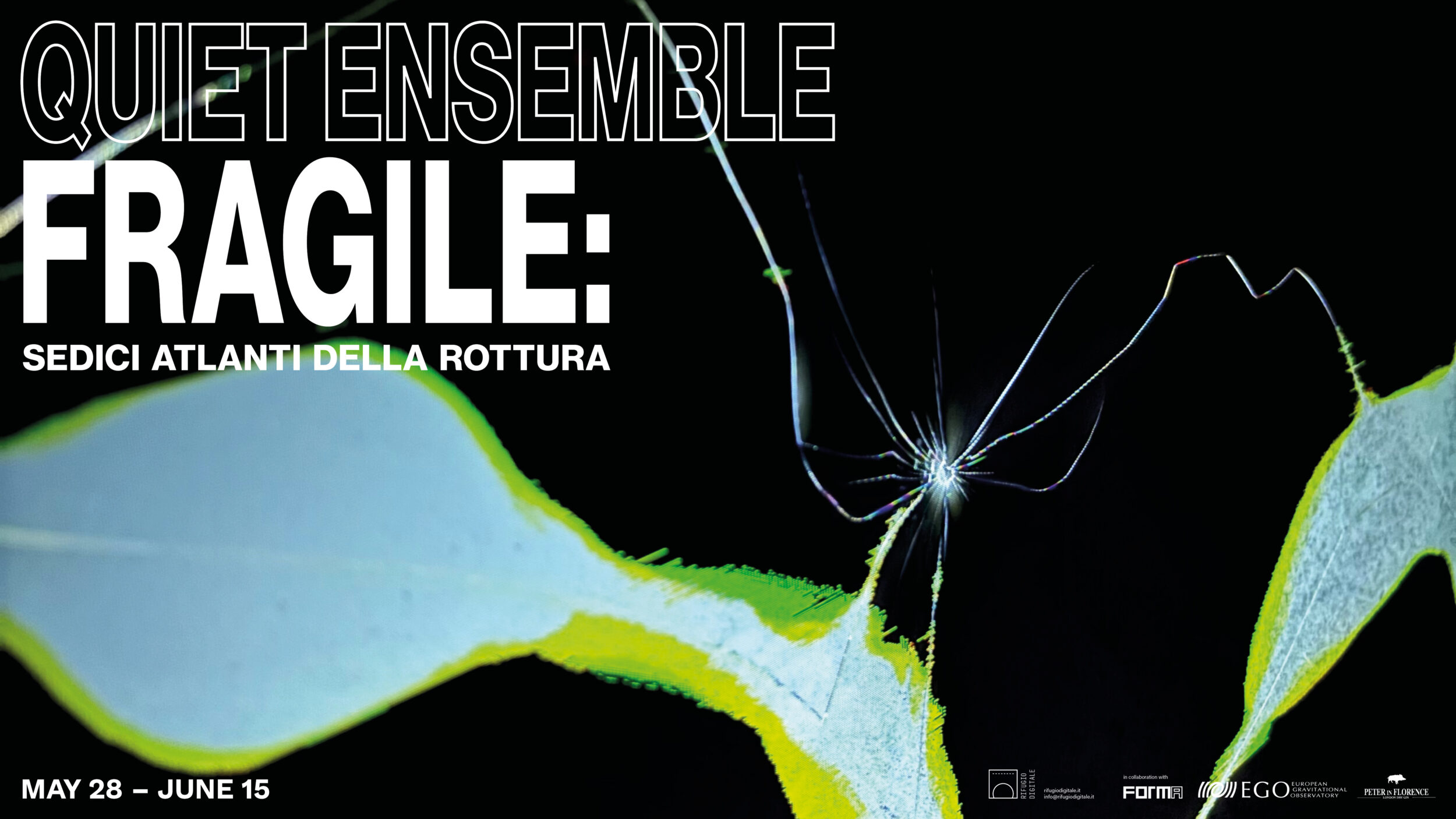A visual and sound tunnel runs through the space, inviting the audience to enter a zone of suspension at the centre of a fragile geometry. Sixteen monitors, hanging along the walls, initially appear as simple black, silent, inert surfaces, a void laden with expectation. Then, slowly, a barely perceptible vibration begins to flow along the edges. Subtle pulsations, timid flickers, intermittent glows: the beginning of a metamorphosis. One after another, the monitors begin to crack, not physically, but internally, digitally, in the intimacy of pixels. The cracks appear as coloured fractures opening across the electronic skin of the screens, generating an unpredictable, fragile, and iridescent visual landscape. The randomness, the imponderable, is a fundamental part of the process: each monitor is destroyed in a unique way, creating unexpected digital paintings that reveal themselves only in the very act of breaking. Each fracture, each explosion of light and colour, is an organic moment born of destruction, a natural metamorphosis in which chaos becomes form.
Designed to remain invisible, technology here manifests in its material and tangible essence, revealing its nature as a machine. In this unveiling, it perhaps becomes a window, or a bridge, to a more primal and hidden physical reality. Could the cracks in the monitors be caused by cosmic particles or signals from deep space, which normally pass through us without leaving a trace? The shapes and sounds of the cracks then reveal their passage. The creaks, explosions, and echoes that accompany and materialize the cracks are, in fact, sound processes of cosmic and environmental data from the nearby European Gravitational Observatory (EGO) in Cascina (PI). The monitors thus become, mysteriously, antennas, capable of listening and sensitively returning to us the most distant cosmic tremors. The crack becomes rhythm, vibration, and sound matter. The tension rises, transforming into a chaotic dance of light and sound, a symphony of fragility that culminates in an explosion of color and disintegration.
Fragile is a choreography of collapse, where fragility is not a flaw but a generative, aesthetic, and deeply human condition. The randomness of destruction and the organic effect that it generates reflect the beauty and unpredictability of a distant natural process.
The meeting between artists and scientists is one of the most interesting and promising frontiers of contemporary culture – stated Massimo Carpinelli, director of EGO – and it certainly contributes to creating a new imagination and a more widespread awareness of the value and meaning of research. Our goal is to foster experiences and dialogues between art and science in order to become a point of reference in the Italian landscape.
Massimo Carpinelli
Director of the Osservatorio Gravitazionale Europeo

